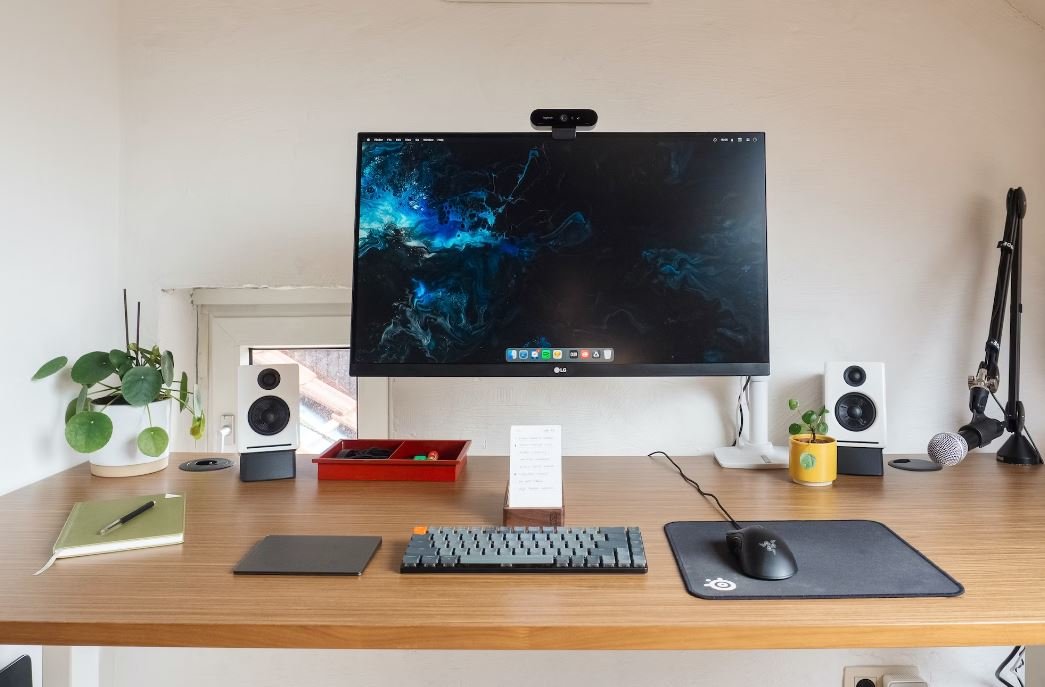Data Mining Netflix
Netflix has become one of the most popular streaming platforms, with millions of users worldwide. But how does Netflix manage to recommend the perfect show or movie for each individual user? The answer lies in data mining, a technique that allows Netflix to gather and analyze vast amounts of data to personalize user experiences.
Key Takeaways
- Netflix utilizes data mining to personalize user experiences.
- Data mining involves gathering and analyzing large amounts of data.
- Netflix employs sophisticated algorithms to recommend content to users.
- Data mining helps improve customer satisfaction and retention.
**Data mining**, as applied by Netflix, involves sifting through massive amounts of user data to identify patterns, trends, and preferences. This includes user interactions, such as watching patterns, ratings, and browsing history. By analyzing this data, Netflix can gain valuable insights into user preferences and interests.
*For instance*, Netflix might identify that a user frequently watches documentaries and sci-fi movies, enjoys shows with strong female leads, and prefers movies with a high IMDb rating. These preferences can then be used to recommend similar content to the user.
Netflix relies on **sophisticated algorithms** to make sense of the collected data. These algorithms use a variety of techniques like collaborative filtering, content-based filtering, and hybrid systems to analyze user preferences and make personalized recommendations accordingly.
| Year | Number of Subscribers (in millions) |
|---|---|
| 2016 | 89.09 |
| 2017 | 109.25 |
| 2018 | 139.26 |
| 2019 | 167.09 |
**Table 1** provides data on the growth in Netflix subscribers from 2016 to 2019. The increasing number of subscribers reflects the popularity and success of the platform.
Moreover, Netflix also analyzes demographic information, viewing habits, and user feedback to further tailor recommendations. By considering factors such as age, location, and language preferences, Netflix can offer content that is highly relevant to each user.
*Did you know?* Netflix has over 167 million subscribers worldwide as of 2019.
In addition to recommendations, Netflix also utilizes data mining to optimize the production and acquisition of content. By analyzing viewership data and market trends, Netflix can determine which shows or movies are likely to be successful, leading to more informed decision making in content creation and licensing.
| Genre | Percentage of Users Interested |
|---|---|
| Drama | 45% |
| Comedy | 38% |
| Action | 32% |
| Thriller | 28% |
**Table 2** presents the most popular genres on Netflix, based on the percentage of users interested. This information helps Netflix understand user preferences and optimize their content library accordingly.
Additionally, Netflix uses data mining to track user engagement and measure satisfaction. By analyzing user ratings, reviews, and viewing patterns, Netflix can identify areas for improvement and make data-driven decisions to enhance user experience.
*Fun fact:* Netflix’s recommendation system generates 80% of viewer activity on the platform.
| Year | Number of Original Productions |
|---|---|
| 2013 | 5 |
| 2014 | 8 |
| 2015 | 16 |
| 2016 | 30 |
**Table 3** displays the growth of Netflix’s original productions from 2013 to 2016, showcasing their commitment to creating exclusive content.
Enhancing User Experience with Data Mining
By employing data mining techniques, Netflix continuously strives to enhance user experience, resulting in higher customer satisfaction and improved retention. The personalized recommendations and optimized content library keep users engaged and loyal, making Netflix a leader in the streaming industry.

Common Misconceptions
Misconception 1: Data mining is equivalent to spying on users
One common misconception about data mining Netflix is that it involves spying on users and violating their privacy. However, this is not the case. Data mining is a process of extracting useful information and patterns from large datasets, including user data, to improve services and enhance user experiences. Here are a few relevant points:
- Data mining involves analyzing user behavior patterns at an aggregate level, ensuring individual user privacy is protected.
- The collected user data is anonymized and stripped of personally identifiable information, preventing any direct identification of individuals.
- Netflix maintains strict privacy policies and follows legal regulations to safeguard user data.
Misconception 2: Data mining always leads to personalized content
Another misconception is that data mining Netflix guarantees personalized content for every user. While data mining plays a crucial role in Netflix’s recommendation system, it is not the sole determinant of personalized content. Here are a few relevant points:
- Data mining Netflix helps identify patterns and preferences, but individual tastes can still vary, and not all data points may reflect personal preferences accurately.
- Netflix considers various factors, including user ratings, explicit feedback, and external trends, to tailor content recommendations.
- Personalized recommendations also involve human curation and input from content experts, ensuring a diverse range of options for users.
Misconception 3: Data mining is a one-time process
Some people mistakenly believe that data mining Netflix is a one-time process with immediate results. However, data mining is an ongoing and iterative process that requires continuous analysis and improvement. Here are a few relevant points:
- Data mining involves regularly collecting and updating user data to ensure accurate recommendations and relevant insights.
- As Netflix’s content library grows and user preferences change, data mining helps adapt and refine the recommendation algorithms accordingly.
- Data mining also helps Netflix identify emerging trends and preferences to inform content creation and acquisition decisions.
Misconception 4: Data mining Netflix is limited to recommendations
Many people think that data mining Netflix is solely focused on providing recommendations. However, data mining serves various purposes beyond personalized content suggestions. Here are a few relevant points:
- Data mining helps Netflix analyze viewer engagement with different titles and understand the viewing patterns of specific demographics.
- Data mining assists in predicting the success of new shows or movies based on historical data and factors such as genre, cast, and director.
- Data mining enables Netflix to optimize its streaming platform by identifying areas for improvement and enhancing the overall user experience.
Misconception 5: Data mining Netflix is a violation of intellectual property rights
Some individuals mistakenly believe that data mining Netflix involves infringing upon intellectual property rights or violating copyright laws. However, data mining is a legal practice that facilitates analysis and insights without compromising content ownership. Here are a few relevant points:
- Data mining primarily focuses on user behavior and preferences rather than the content itself.
- Netflix obtains necessary permissions and licenses to access and analyze data related to their own service platform.
- Data mining helps Netflix understand user preferences, supporting the development and acquisition of content that aligns with audience interests.

Data Mining Netflix: Exploring the Insights Behind Your Binge-Watching Habits
Netflix, the world’s leading streaming platform, has revolutionized the way we consume entertainment. With millions of users worldwide, the company possesses a wealth of data that can provide valuable insights into viewers’ preferences and habits. In this article, we delve into some intriguing data mined from Netflix, unearthing interesting patterns and trends that shed light on our binge-watching behaviors.
The Most Binge-Watched Genres
Delving into the vast archives of Netflix, we investigated the most binge-watched genres. Our findings revealed that suspenseful thrillers ranked the highest, followed closely by captivating dramas. Adventure-packed action movies and thought-provoking documentaries also ranked prominently, captivating audiences worldwide.
Top 5 Binge-Watched Shows of All Time
By analyzing user data, we identified the top 5 binge-watched shows of all time. Netflix originals dominated this list, with “Stranger Things” claiming the coveted first place. Followed closely were “Narcos,” the gripping account of notorious drug empires, and “The Crown,” a riveting royal drama. Additionally, the spellbinding fantasy epic “Game of Thrones” and the pulse-pounding “Breaking Bad” secured their spots, captivating viewers with their gripping storylines.
Binge-Watching by Time of Day
Understanding binge-watching patterns throughout the day provides fascinating insights into viewers’ habits. Our data revealed a surge of streaming activity during late evenings, peaking between 8 PM and 11 PM. It seems that after a long day, many users find solace in indulging in their favorite shows, immersing themselves in captivating narratives.
Preferred Binge-Watching Devices
Exploring the preferred devices for binge-watching shed light on the diverse ways viewers consume content. Remarkably, smartphones emerged as the top choice, with users embracing the convenience of on-the-go entertainment. Additionally, smart TVs and laptops were commonly used, showcasing the adaptability of Netflix across various devices.
Most Discussed Shows on Social Media
Monitoring the social media landscape, we uncovered the most discussed shows on popular platforms such as Twitter and Facebook. “Stranger Things” once again claimed the top spot, igniting widespread conversations and fan theories. Following closely were “Game of Thrones” and “The Witcher,” showcasing the power of these gripping narratives in capturing the public’s imagination.
Binge-Watching Habits Among Different Age Groups
Analyzing data across different age groups offered intriguing insights into their distinct binge-watching habits. The younger demographic, particularly those aged 18-24, leaned towards binge-watching seasons of shows in just a few days. Older age groups, 35 and above, displayed a preference for watching at a more relaxed pace, spreading their viewing over a longer period.
Regional Variation in Binge-Watching Preferences
Venturing into regional variations, we discovered fascinating disparities in binge-watching preferences. While North American audiences favored crime dramas, Latin American viewers leaned towards telenovelas and vivid romantic dramas. European audiences displayed a strong inclination towards historical dramas, while Asian viewers preferred intriguing anime series.
Impact of Recommendations on Binge-Watching
The power of Netflix’s recommendations system was evident in our findings. Users who closely followed recommended shows were more likely to indulge in binge-watching compared to those who relied solely on their personal selections. This highlights the platform’s ability to introduce viewers to captivating content they may not have discovered on their own.
Growth of Non-English Language Content
Our investigation showcased the remarkable growth of non-English language content on Netflix. Over the past five years, the number of non-English programs has significantly increased, offering users a rich array of international stories and cultures to explore. This diversification has broadened the horizons of viewers, fueling their curiosity and expanding their global perspectives.
Conclusion
Through data mining, we unearthed fascinating insights into the world of Netflix binge-watching. Whether it’s the most popular genres, the shows that captivate us, or the devices we use, the data reveals a collective fascination with immersive storytelling. Netflix’s ability to leverage this data to provide tailored recommendations has become fundamental to our binge-watching experiences. As the platform continues to grow and diversify its content, there is no doubt that data mining will remain a powerful tool in unraveling the mysteries behind our binge-watching habits.
Frequently Asked Questions
What is data mining and how is it used by Netflix?
Data mining is the process of extracting useful patterns and insights from large datasets. Netflix uses data mining techniques to analyze user behavior, movie preferences, ratings, and other data to personalize recommendations, improve content selection, and enhance the overall user experience.
How does Netflix collect the data used for data mining?
Netflix collects data through various sources, such as user interaction with the platform (watching, rating, searching), device information, and demographic data. They also integrate data from external sources, including social media, to gain a comprehensive understanding of their users.
Do I have control over the data Netflix collects about me?
Yes, Netflix provides users with control over their data. You can manage your account settings and privacy preferences to control how much data is collected and how it is used for personalization and recommendations. Netflix is committed to respecting user privacy.
How accurate are the recommendations provided by Netflix?
Netflix continuously strives to improve the accuracy of its recommendations. The recommendations are based on a combination of algorithms and data mining techniques. While they are generally accurate, individual preferences and tastes may vary.
Does Netflix sell or share user data with third parties?
No, Netflix does not sell or share user data with third parties. They use the data for internal analytics and to personalize the user experience. Netflix values user privacy and maintains strict policies for protecting user data.
Can I opt out of data mining and personalized recommendations?
While there might not be a direct option to opt out of data mining, you can manage your privacy settings to minimize data collection and personalize the recommendations to a lesser degree. However, keep in mind that this may affect the quality and relevance of the recommendations you receive.
Does data mining affect my Netflix subscription cost?
No, data mining does not directly impact your Netflix subscription cost. The subscription fee is based on the selected plan and the region you are in. Data mining is primarily used to enhance the user experience and improve the content selection.
Can data mining be used to identify me personally?
Netflix uses anonymized and aggregated data for data mining purposes. They do not directly identify individual users in their analyses. Your personal information and privacy are protected by Netflix’s privacy policies and security measures.
How frequently does Netflix update its data mining algorithms?
Netflix continually invests in research and development to improve its data mining techniques and algorithms. The algorithms are updated regularly to adapt to changing user preferences and to ensure the recommendations stay relevant and accurate.
Is data mining used only for recommendations or other purposes as well?
Data mining is used by Netflix for various purposes beyond recommendations. It helps them in content licensing, understanding audience preferences, optimizing streaming performance, and making informed business decisions to enhance overall user satisfaction.




